|
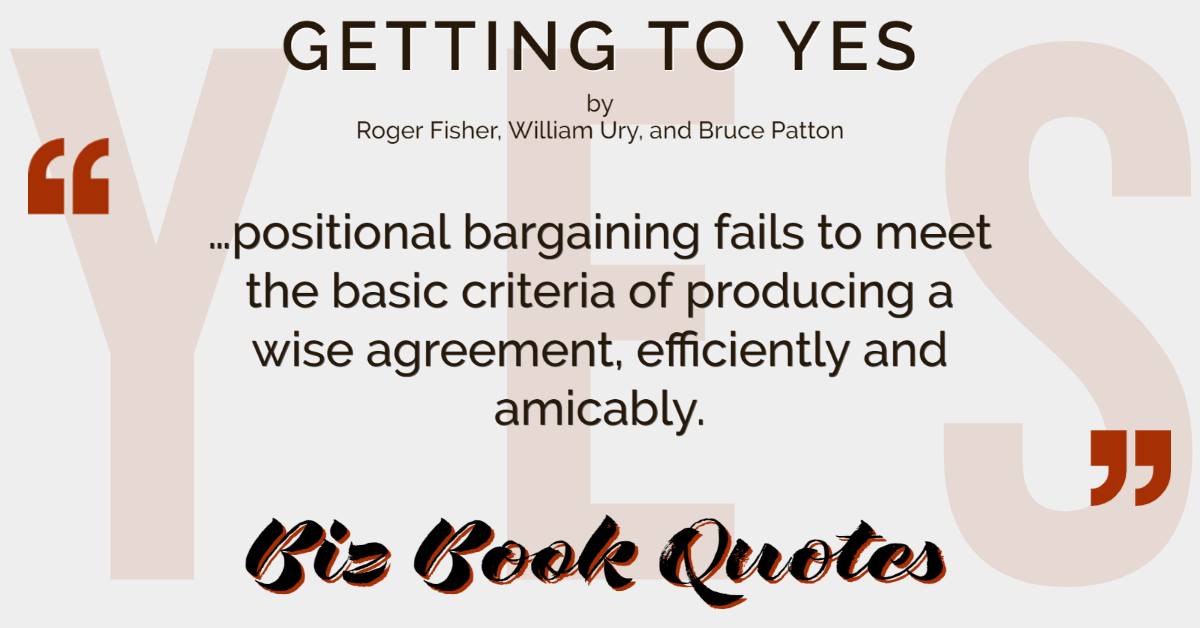
|
Getting to Yes:
…positional bargaining fails to meet the basic criteria of producing a wise agreement, efficiently and amicably.
|
4 |
|

|
Getting to Yes:
The more you clarify your position and defend it against attack, the more committed you become to it.
|
4 |
|
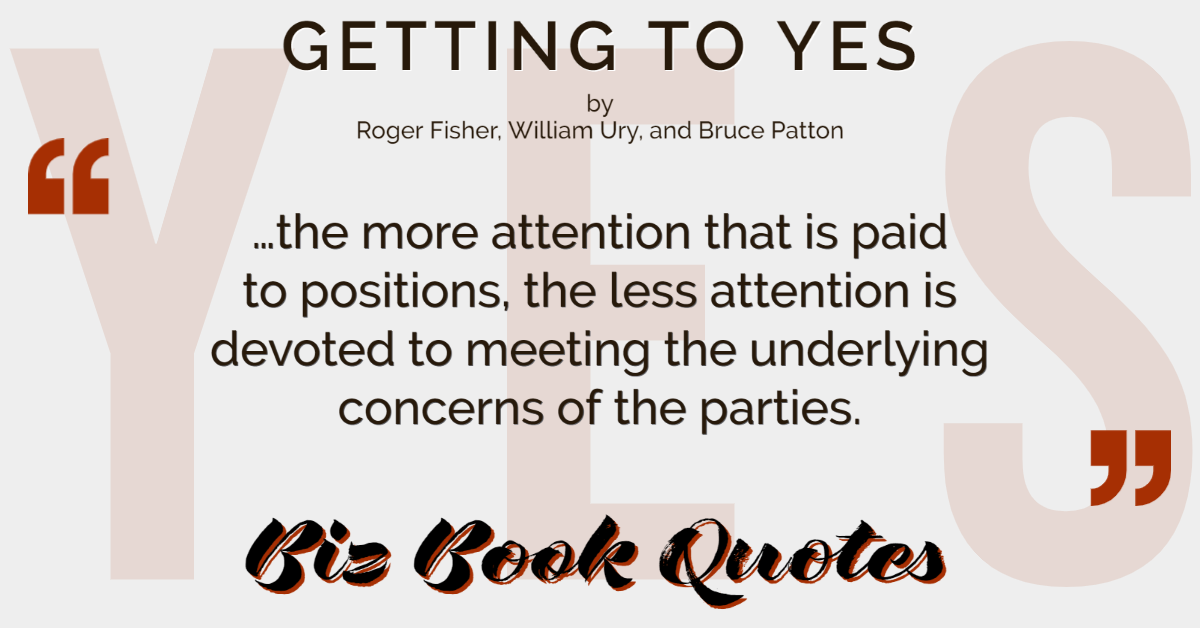
|
Getting to Yes:
…the more attention that is paid to positions, the less attention is devoted to meeting the underlying concerns of the parties.
|
6 |
|

|
Getting to Yes:
The more extreme the opening positions and the smaller the concessions the more time and effort it will take to discover whether or not agreement is possible.
|
7 |
|

|
Getting to Yes:
Decision-making is difficult and time-consuming at best. Where each decision not only involves yielding to the other side but will likely produce pressure to yield further, a negotiator has little incentive to move quickly.
|
7 |
|
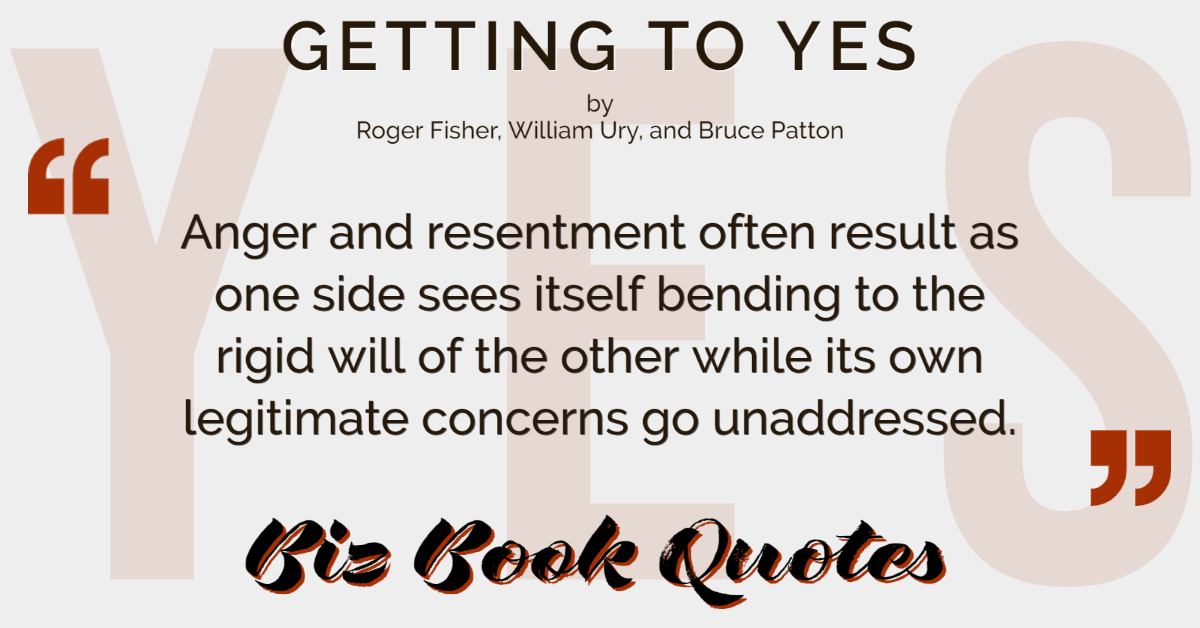
|
Getting to Yes:
Anger and resentment often result as one side sees itself bending to the rigid will of the other while its own legitimate concerns go unaddressed.
|
7 |
|

|
Getting to Yes:
Positional bargaining… strains and sometimes shatters the relationships between the parties.
|
7 |
|

|
Getting to Yes:
The more people involved in a negotiation, the more serious the drawbacks to positional bargaining.
|
8 |
|
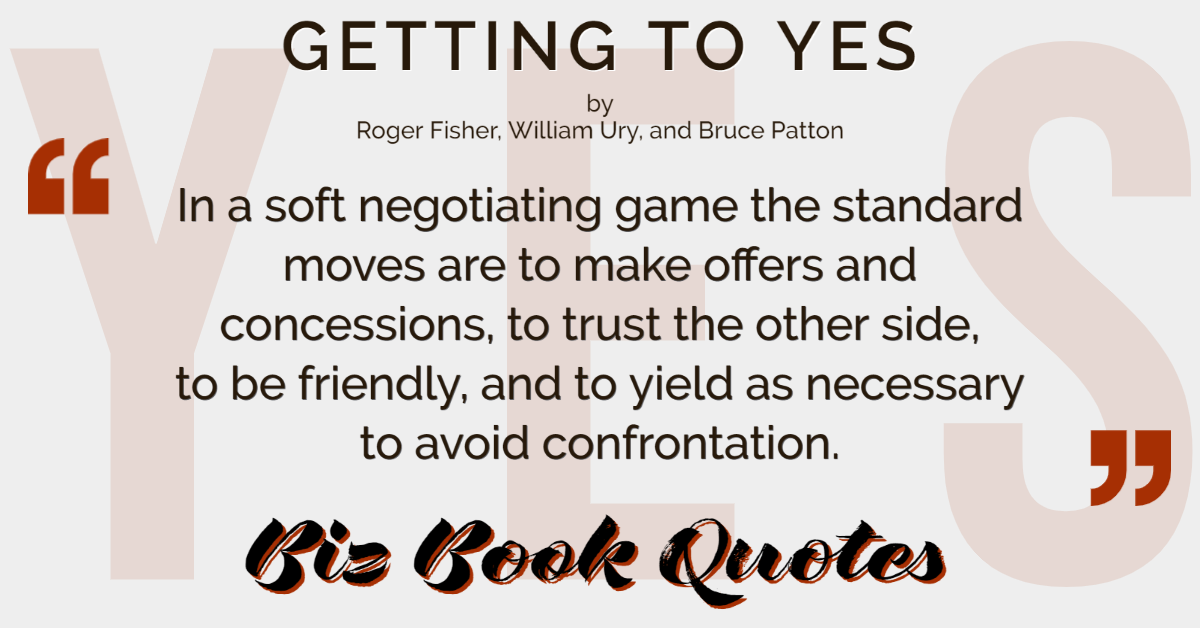
|
Getting to Yes:
In a soft negotiating game the standard moves are to make offers and concessions, to trust the other side, to be friendly, and to yield as necessary to avoid confrontation.
|
9 |
|
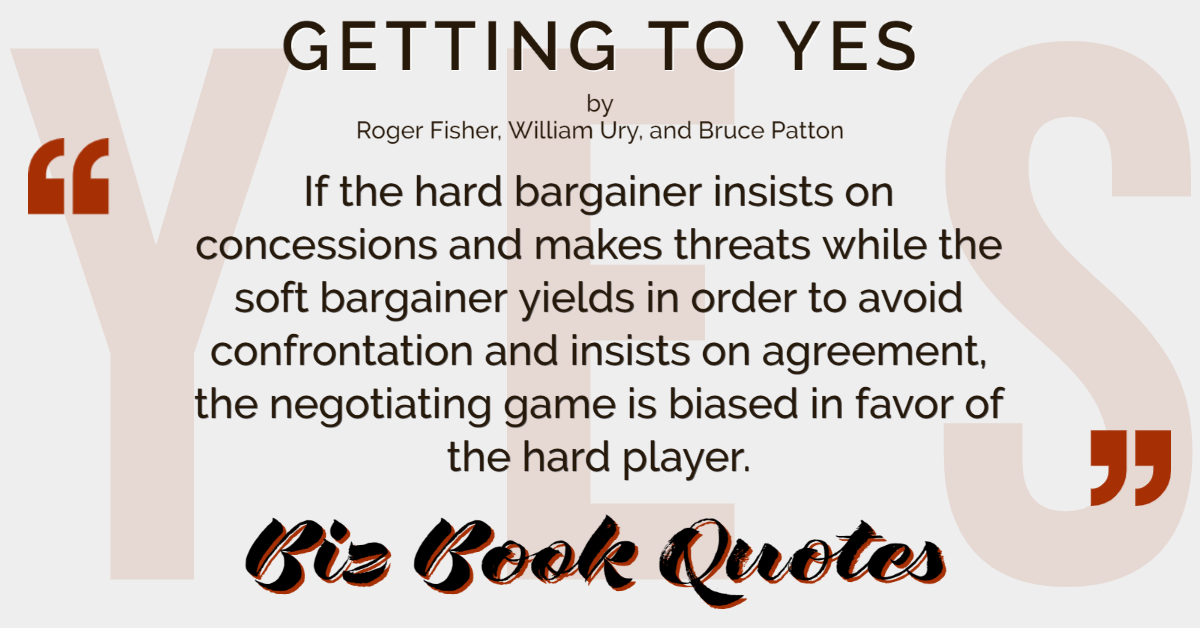
|
Getting to Yes:
If the hard bargainer insists on concessions and makes threats while the soft bargainer yields in order to avoid confrontation and insists on agreement, the negotiating game is biased in favor of the hard player.
|
10 |










